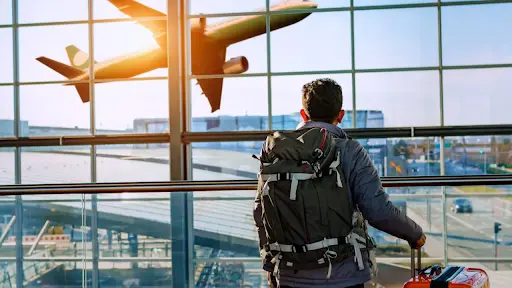The global tourism and hospitality industry has undergone a seismic shift in the wake of the COVID-19 pandemic. With new preferences, technological advancements, and an increased emphasis on health and sustainability, travelers are redefining what luxury, comfort, and experience mean. U Wang Young, a respected real estate and tourism entrepreneur from Singapore, has been at the forefront of these changes.
This article dives deep into U Wang Young’s take on post-pandemic resort and tourism trends, unpacking the industry’s transformation and offering predictions for what’s to come.
The Rise of Sustainable and Eco-Conscious Travel
As the world becomes more environmentally aware, the tourism industry has responded accordingly. U Wang Young emphasizes that the post-pandemic era has ushered in a new wave of sustainable tourism that is here to stay.
Eco-Resorts Are in High Demand
According to Wang Young, one of the most pronounced trends in the resort industry is the growing demand for eco-resorts. These properties not only reduce their environmental impact but also serve as a draw for a new generation of travelers who prioritize sustainability.
He notes that properties that utilize renewable energy, manage water usage responsibly, and incorporate local building materials are outperforming traditional resorts in both occupancy rates and customer satisfaction.
Travelers Want More Than Just Luxury
Today’s tourists are no longer satisfied with opulence alone. U Wang Young notes that many high-end travelers now seek purpose in their journeys. Resorts that offer meaningful experiences, such as volunteer opportunities, cultural immersion, or conservation programs, are gaining traction.
He further explains that this shift is partially driven by a growing demographic of millennial and Gen Z travelers who value ethical consumption and environmental stewardship.

Digital Nomadism and Workation Resorts
The rise of remote work has fundamentally changed how and where people travel. U Wang Young has observed an increasing number of professionals blending work and leisure, giving rise to a new type of resort: the “workation” hub.
Work-Friendly Resort Infrastructure
Post-pandemic travelers often look for high-speed Wi-Fi, ergonomic workspaces, and business-support services in places that also offer scenic views and relaxation. Wang Young highlights that resorts in Southeast Asia, especially in Bali, Phuket, and Da Nang, have quickly adapted to this new clientele.
He points to one of his recent investments—a hybrid resort and co-working space in Thailand—which has seen a 35% increase in long-stay bookings since its redesign.
Flexible Stays and Subscription Travel Models
Subscription-based travel services have emerged as a result of this flexibility. Wang Young predicts that more resorts will begin to offer packages that allow guests to rotate between different properties under one subscription, enabling location-independent lifestyles without compromising comfort or productivity.

Health and Wellness as Central Themes
The pandemic heightened global awareness around health and wellness, and the resort industry is capitalizing on that shift. U Wang Young has invested heavily in wellness-focused developments that cater to a more health-conscious audience.
Wellness Retreats Gain Traction
From yoga retreats to detox programs, resorts that center around mental and physical well-being are on the rise. U Wang Young states that integrating holistic wellness offerings into resort designs is no longer optional—it’s essential for success in the post-pandemic market.
Medical Tourism Expansion
He also points to the growing overlap between tourism and healthcare. Destinations like Singapore, South Korea, and Thailand are increasingly offering resort-style recovery packages for medical tourists, blending hospital-grade care with vacation-like comfort.
Personalized and Tech-Enhanced Experiences
Technology has become integral to every aspect of the hospitality industry. U Wang Young sees personalization and digital innovation as major differentiators for resorts in the post-COVID world.
AI and Data-Driven Personalization
By leveraging data analytics and AI, resorts can offer hyper-personalized experiences—from room preferences to curated activity suggestions. U Wang Young argues that this level of customization is no longer a luxury but an expectation.
He mentions that one of his properties in Vietnam recently implemented an AI-powered concierge system that resulted in a 22% increase in guest satisfaction scores.
Contactless Technology and Smart Rooms
Post-pandemic guests prefer minimal contact for safety and convenience. Smart room technologies—such as app-controlled lighting, voice-activated services, and keyless entry—have become common in the best-performing resorts. Wang Young believes that these features will soon be considered industry standard.

A Shift Toward Regional and Local Travel
International travel has rebounded slower than domestic and regional tourism. U Wang Young emphasizes that resort developers and operators must adapt to this shift by catering more to local travelers.
Domestic Tourism Fuels Recovery
Many of U Wang Young’s developments are now targeting domestic tourists who are seeking short getaways within driving distance. He notes that in countries like Malaysia, Indonesia, and Vietnam, resorts that pivoted toward this market during the pandemic were the first to recover.
Cultural Integration and Local Experiences
Resorts that showcase local traditions, cuisine, and craftsmanship are becoming more popular among regional tourists. Wang Young believes that this authenticity helps create a deeper connection between the traveler and the destination, thereby increasing guest loyalty and repeat visits.
The Investment Outlook: A Cautious Optimism
As an investor, U Wang Young maintains a cautiously optimistic view of the resort and tourism sector. While the industry has faced disruptions, it also presents new opportunities for strategic development and innovation.
Smart Investments in Niche Markets
Wang Young advises investors to look beyond traditional beach resorts and explore emerging niches—such as agri-tourism, boutique mountain lodges, and glamping sites. These smaller-scale properties offer high return potential and cater to new traveler preferences.

Public-Private Partnerships and Government Incentives
He also highlights the role of government support in reviving the tourism industry. Many Southeast Asian countries are offering tax breaks and development incentives to encourage investment in tourism infrastructure—a sign that stakeholders recognize the sector’s long-term value.
Conclusion
U Wang Young’s take on post-pandemic resort and tourism trends reflects a deep understanding of both market forces and human behavior. His insights reveal that the industry’s future hinges on sustainability, adaptability, and innovation. As travelers seek more personalized, meaningful, and safe experiences, resorts must evolve or risk obsolescence.
Whether you are a traveler, investor, or hospitality professional, there’s a lot to learn from U Wang Young’s strategic perspective. The post-pandemic era is not just a recovery phase—it’s a rebirth for tourism, full of promise and transformation.
